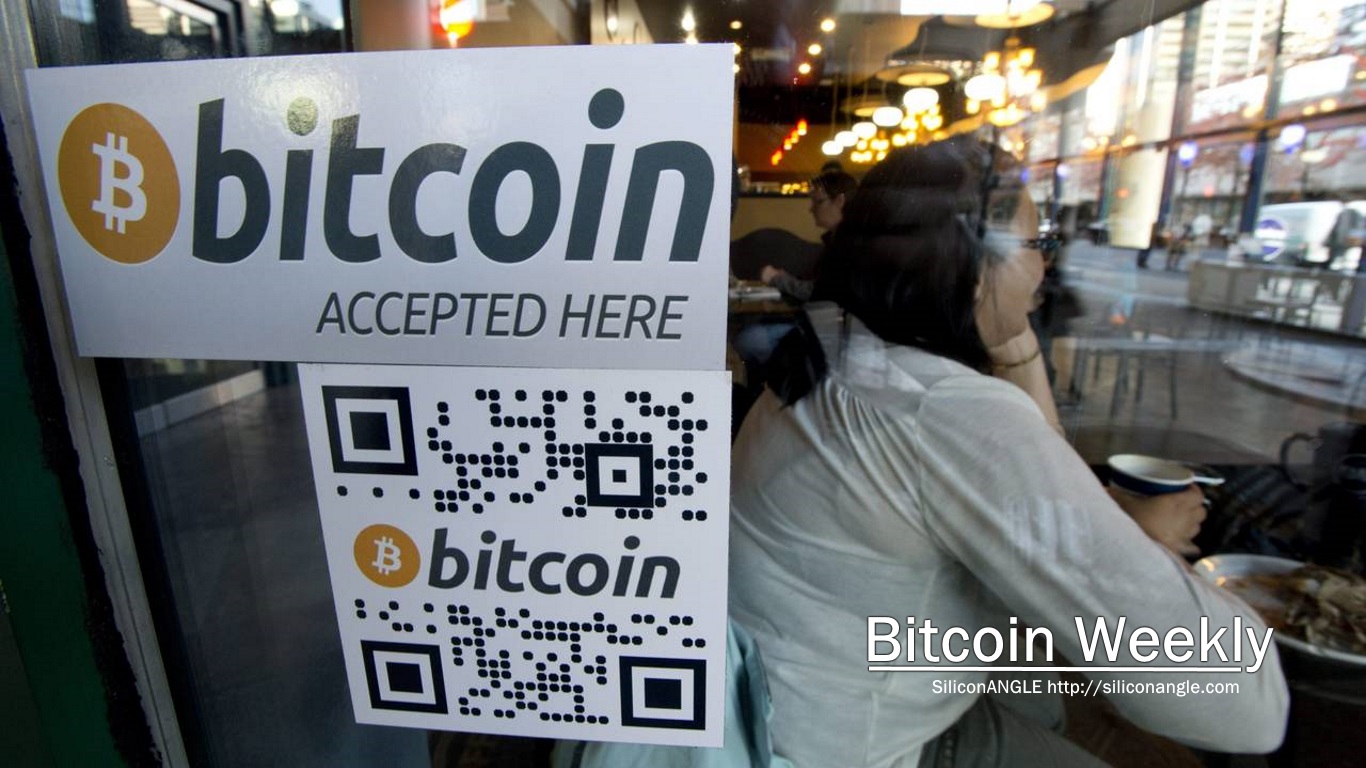 NEWS
NEWS
 NEWS
NEWS
 NEWS
NEWS
Bitcoin News With SiliconANGLE
This last summer Adam Back, developer of the Bitcoin algorithm HashCash, and Austin Hill, founder anonymous networking and privacy technology company Zero-Knowledge Systems, teased the idea of Bitcoin sidechains: a mechanism for transferring Bitcoins to a separate-but-connected blockchain that can be used like an alt-currency but has its Proof of Work and value entangled with Bitcoin. This is done via a mechanism called “pegging” which means that the sidechain’s security and scarcity is tied directly to (backed by) Bitcoin’s blockchain.
Yesterday, the sidechain whitepaper was released [PDF] for the Bitcoin community to review. The list of authors includes a staggering number of coding luminaries: Adam Back, Matt Corallo, Luke Dashjr, Mark Friedenbach, Gregory Maxwell, Andrew Miller, Andrew Poelstra, Jorge Timón, and Pieter Wuille.
Black we already know. Maxwell and Wuille are Bitcoin core developers. Luke Dashjr is a regular contributor to bitcoind and Bitcoin-Qt and maintains mining software. Corallo wrote the BitcoinJ Open Source Library.
For more information on sidechains, see today’s Reddit AMA with Black, Maxwell, et al.
From the abstract of “Enabling Blockchain Innovations with Pegged Sidechains”:
We propose a new technology, pegged sidechains, which enables bitcoins and other ledger assets to be transferred between multiple blockchains. This gives users access to new and innovative cryptocurrency systems using the assets they already own. By reusing Bitcoin’s currency, these systems can more easily interoperate with each other and with Bitcoin, avoiding the liquidity shortages and market fluctuations associated with new currencies. Since sidechains are separate systems, technical and economic innovation is not hindered. Despite bidirectional transferability between Bitcoin and pegged sidechains, they are isolated: in the case of a cryptographic break (or malicious design) in a sidechain, the damage is entirely confined to the sidechain itself.
Since sidechains permit the construction of alternate blockchains that are backed by Bitcoin, it will open up the possibility for clients to allow for numerous different functionalities without the fragility of developing a brand new altcoin.
Alternate currencies (aka altcoins) are often produced to provide proof-of-concept or diverge an idea from Bitcoin. Some do this to try to produce a better Bitcoin, others to add functionality, or to develop totally different functionality (Namecoin), and yet others because of sheer whimsy (Dogecoin).
During today’s Reddit AMA, Peter Wuille gave his thoughts on what he thinks sidechains will do for Bitcoin.
He believes that sidechains could provide “[a] place to try out new ideas, and show their virtue to the community, before arguing they should be incorporated into Bitcoin proper (which would upgrade the security).”
But he also feels that sidechains will provide a way to balance Bitcoin scalability/security tradeoffs. As the Bitcoin blockchain only provides one form of maximal security for all transactions and this could be seen as a centralization concern. Sidechains would allow using the security and stability of the Bitcoin blockchain to support divergent blockchains and thus strengthen potential variety of transaction capabilities.
He also added that there is currently no current alpha sidechain for developers (and enthusiasts) to tinker with but there will be one appearing soon at https://github.com/blockstream.
Several of the whitepaper authors belong to a startup company called Blockstream, which seems inextricably tied to the development of sidechains.
Blockstream is a for-profit company co-founded by Pieter Wuille, Jonathan Wilkins, Jorge Timón, Erik Svenson, Gregory Maxwell, Austin Hill, Francesca Hall, Mark Friedenbach, Alex Fowler, Matt Corallo, and Adam Back. It will become the primarily repository and financial base for building and transforming sidechain technology for the Bitcoin blockchain.
The mission statement of Blockstream includes a vision of accelerating innovation of cryptocurrencies, open assets, and smart contracts—all of which are functions of blockchain technologies currently under development.
During the Reddit AMA twobitidiot asked how Blockstream being a for-profit venture will affect sidechain development especially when several of the founders happen to be Bitcoin core developers.
Greg Maxwell started by explaining that it isn’t uncommon for members of the Free Open Source Software (FOSS) community to work in for-profit companies while also being left off leash to work in their own personal capacity.
However, that said, he added, “Pieter and I (the blockstream co-founders with commit access on the Bitcoin Core repository) had written into our employment agreements a clause that if we ever feel Blockstream is acting unethically we can depart and Blockstream will continue to pay most of our salary for a year for us to continue working on Bitcoin core.”
While sidechains had been introduced this summer, the whitepaper and proposal only hit recently. The usefulness of sidechains will be leveraged entirely by adoption by the community as a whole and Blockstream’s founders have laid their hopes on being capable of producing clients and functionality that will draw that attention.
The whitepaper is still being digested by the community and experts, but if the Reddit AMA is any indication, there’s still a fair amount of skepticism as to the practicality of sidechains, but also an equal amount of anticipation.
Sidechains currently have no practical proof-of-concept, so judgement may be reserved until Blockstream provides workable code in its GitHub repository.
THANK YOU